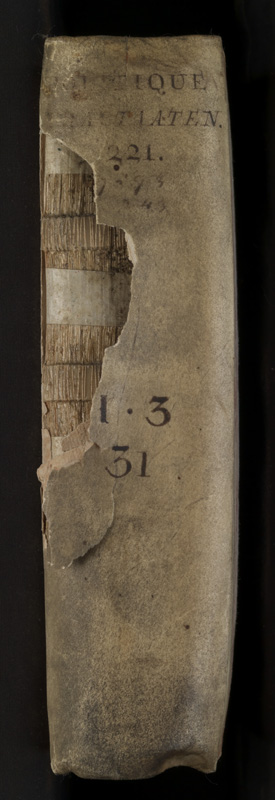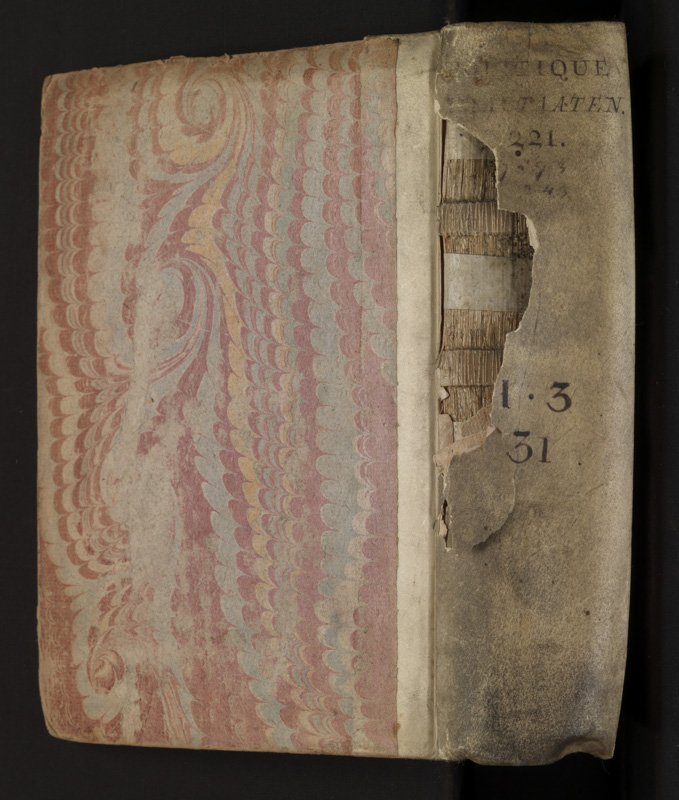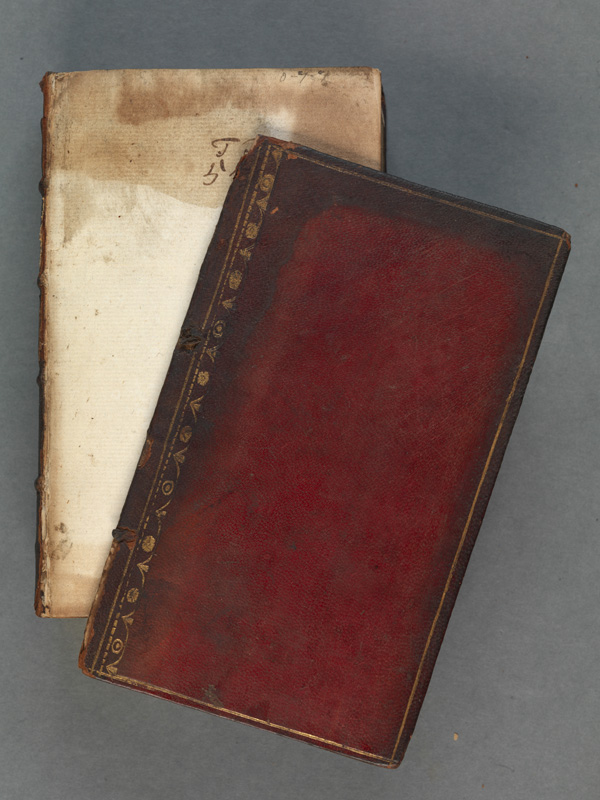To preserve or conserve?
This exhibition invites you into the world of the Conservators at Trinity College Library, and offers an introduction to the range of activities carried out by staff in the department.
Libraries contain the evidence of our past in the form of large collections of diverse materials. Unfortunately, over time, parts of collections can be forgotten, ignored, or neglected as priorities and interests change. The environment in which collections are kept, and the way they are used, has enormous influence on their condition. Light, temperature, humidity, pollution, pests, and the actions of people impact on the physical state of objects.
We explore the treatment and care of a range of different materials, from Greek and Roman papyri to parchment scrolls from Ethiopia; from manuscripts to printed books; and from glass-plate negatives to Twentieth century travel diaries.
The eclectic nature of the collection requires a broad spectrum of approach. For many items, preservation solutions such as good documentation, minimal treatment, and safe housing, are the best options. Others need a more extensive conservation treatment in order to remedy severe damage, and to slow aggressive degradation processes.
The items in the first part of the exhibition represent the common types of damage found in Library collections.



Sketchbook
c. 1927
This sketchbook contains drawings by Lady Charlotte Albinia Stopford and James Hore. It is a half-leather sheepskin binding, with marbled-paper sides, and brass foredge clasp. The sketchbook suffers from extensive mould damage, which relates to the surface size or fixative applied to the graphite sketches by the artist. As treatment to reduce staining would compromise the stability of the drawings and the original binding structure, the best option for this item is to provide storage in a clean and stable environment.
MS 11241/1



Dutch political pamphlets
1617-56
Quarter-vellum binding with marbled paper sides, containing a collection of pamphlets from the Fagel collection. The paper lined parchment spine, has become embrittled and has fractured due to light damage and the impact of temperature and relative humidity. Many of the pamphlets in this collection have been uniformly bound in this style, with approximately 300 in a similar damaged state.
The treatment involves the in situ repair of the spine.


A group of printed books
These bindings are from the Long Room. They display damage caused by the environmental conditions in the Library, including light damage which has degraded the joints and sewing supports. The boards are detached and text-block split, indicating their embrittled state and susceptibility to damage when handled or used.
They require disbinding, re-sewing using original sewing stations, and rebinding with archival calf leather. Approximately 50,000 bindings in the Long Room are in similar condition. They are held intact with cotton tying tape.
Robert JamesThe Psalter
London, 1840
This reversed sheepskin condensed-tanned binding is degrading due to the chemical instability of the tannage and absorption of sulphur dioxide from the environment. The damage is known as red-rot, due to the characteristic red powder produced as the leather breaks down. The effect can be temporarily contained by using consolidants on the degrading leather; however, the only long-term solution is rebinding.
MS ref H.dd.41



A group of 19th-century books
These early bookcloth case-bindings all exhibit extreme fading of the dyes where exposed to light, notably at the spines and across the joints on the covers. The cloth is embrittled, with handling tears beginning to develop. They also have excessive levels of surface dirt, due to particulate pollution levels in the Long Room.
The damage caused by light is irreversible. All items require cleaning to remove surface dirt. Approximately 100,000 items require this treatment.
William King correspondence
These pages of writing are from a volume containing copies of out-going correspondence from William King (1650-1729), Archbishop of Dublin 1703, Lord Justice of Ireland.
The paper has been severely damaged due to biodegradation and the ink has faded. An ink revival method, using a reagent containing iron salts, was applied c. late 19th-century in an attempt to improve legibility. Over time the blue colour has developed reducing legibility and the stability of the paper substrate.
The fragile paper and iron gall ink will be stabilised and then repaired.
MS 750/11
Irish and English theatre playbills
19th century
These were produced quickly, on cheap machine-made paper, and were not intended to last. They were fortunately saved by an astute collector, and despite their brittle and torn condition are remarkably intact. The paper will require deacidification, sizing, and repair. They will be catalogued and digitised, and then stored in protective housing.
uncatalogued



